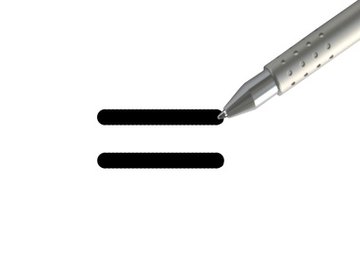
One of the trickiest concepts in algebra involves the manipulation of exponents, or powers. Many times, problems will require you to use the laws of exponents to simplify variables with exponents, or you will have to simplify an equation with exponents to solve it. To work with exponents, you need to know the basic exponent rules.
Structure of an Exponent
Exponent examples look like 23, which would be read as two to the third power or two cubed, or 76, which would be read as seven to the sixth power. In these examples, 2 and 7 are the coefficient or base values while 3 and 6 are the exponents or powers. Exponent examples with variables look like x4 or 9y2, where 1 and 9 are the coefficients, x and y are the variables and 4 and 2 are the exponents or powers.
Adding and Subtracting with Non-like Terms
When a problem gives you two terms, or chunks, that do not have the exact same variables, or letters, raised to the exact same exponents, you cannot combine them. For instance,
could not be simplified (combined) further because the Xs and the Ys have different powers in each term.
Adding Like Terms
If two terms have the same variables raised to the exact same exponents, add their coefficients (bases) and use the answer as the new coefficient or base for the combined term. The exponents remain the same. For instance:
Subtracting Like Terms
If two terms have the same variables raised to the exact same exponents, subtract the second coefficient from the first and use the answer as the new coefficient for the combined term. The powers themselves do not change. For example:
Multiplying
When multiplying two terms (it does not matter if they are like terms), multiply the coefficients together to get the new coefficient. Then, one at a time, add the powers of each variable to make the new powers. If you multiplied
you would end up with
Power of a Power
When a term that includes variables with exponents is raised to another power, raise the coefficient to that power and multiply each existing power by the second power to find the new exponent. For instance:
First Power Exponent Rule
Anything raised to the first power stays the same. For example, 71 would just be 7 and (x2r3)1 would simplify to x2r3.
Exponents of Zero
Anything raised to the power of 0 becomes the number 1. It doesn't matter how complicated or big the term is. For instance:
Dividing (When the Larger Exponent is on Top)
To divide when you have the same variable in the numerator and denominator, and the larger exponent is on top, subtract the bottom exponent from the top exponent to calculate the value of the exponent of the variable on top. Then, eliminate the bottom variable. Reduce any coefficients like a fraction. For example:
Dividing (When the Smaller Exponent is on Top)
To divide when you have the same variable in the numerator and denominator, and the larger exponent is on the bottom, subtract the top exponent from the bottom exponent to calculate the new exponential value on the bottom. Then, erase the variable from the numerator and reduce any coefficients like a fraction. If there are no variables left on top, leave a 1. For instance:
Negative Exponents
To eliminate negative exponents, put the term under 1 and change the exponent so that the exponent is positive. For example,
Flip fractions with negative exponents in order to make the exponent positive:
When division is involved, move variables from the bottom to the top or vice versa to make their exponents positive. For example:
References
About the Author
Kathryn White has over 11 years of experience tutoring a range of subjects at the kindergarten through college level. Her writing reflects her instructional ability as well as her belief in making all concepts understandable and approachable. White earned a Bachelor of Arts in history from Illinois Wesleyan University.
Photo Credits
maths mark image by Bram J. Meijer from Fotolia.com
